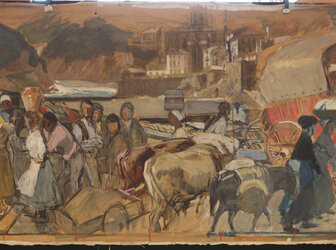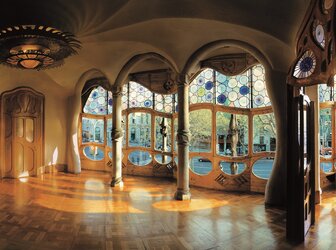Medieval Bridge on the Truchas River, Pobleta de San Miguel
The conservation work tried to resolve teh following problems, the arch intrados displayed areas of strong washed off joints and areas wgere that same waskibg had produced the calcification of the surface to a certain degree. None of the two areas, in spite of these alterations, ...
Read more
Project details
| Title: | Medieval Bridge on the Truchas River, Pobleta de San Miguel |
|---|---|
| Entr. year: | 2008 |
| Result: | Award |
| Country: | Spain |
| Town: | Pobleta de San Miguel, Villafranca der Cid |
| Category type: | industrial and engineering structures and sites |
| Notes: | Type also: rural setting Site between Comunidad Valenciana and Aragon Regions |
| Building type/ Project type: | industrial heritage |
| Former use: | Bridge |
| Actual use: | Historic pedestrian bridge, cultural attraction |
| Built: | 14th - 16th century |
| Architect / Proj.leader: | Fundación Blasco de Alagón |
| The Jury's citation: | The project is valued for it being able to promote cultural heritage, especially among young people, and for the international dimension of this experience via its integration in the dynamics of the European Heritage Days. The project is admired for the high quality of the research preceding the conservation of the bridge as well as for the excellent conservation work itself. Also the cooperation between two villages, two provinces and two regions is highly valued. |
| Web, Links: | premios.hispanianostra.org/portfolio/puente-de-la-pobleta-de-san-miguel-sobre-el-rio-truchas/ |
Description:
The conservation work tried to resolve teh following problems, the arch intrados displayed areas of strong washed off joints and areas wgere that same waskibg had produced the calcification of the surface to a certain degree. None of the two areas, in spite of these alterations, displayed structural problems that would require an urgent repair. The surfaces were partially affected by the presence of upper an lower vegetation. The upper vegetation offered a higher threat since it deepened its roots between the joints of the stones. It was located in the base of the piers of the bridge and at the height of its pavement on the face, that is to say, wehre the water penetrated the joints between stones in search for an exit. Also the conditioning of the river's quay and of the lighting system were urgent interventions.
Similar projects


17th-18th century

19th century
13th century

17th century

14th century

1911-1919

1907

18th century

11th and 16th century

1904-1906

13th century



